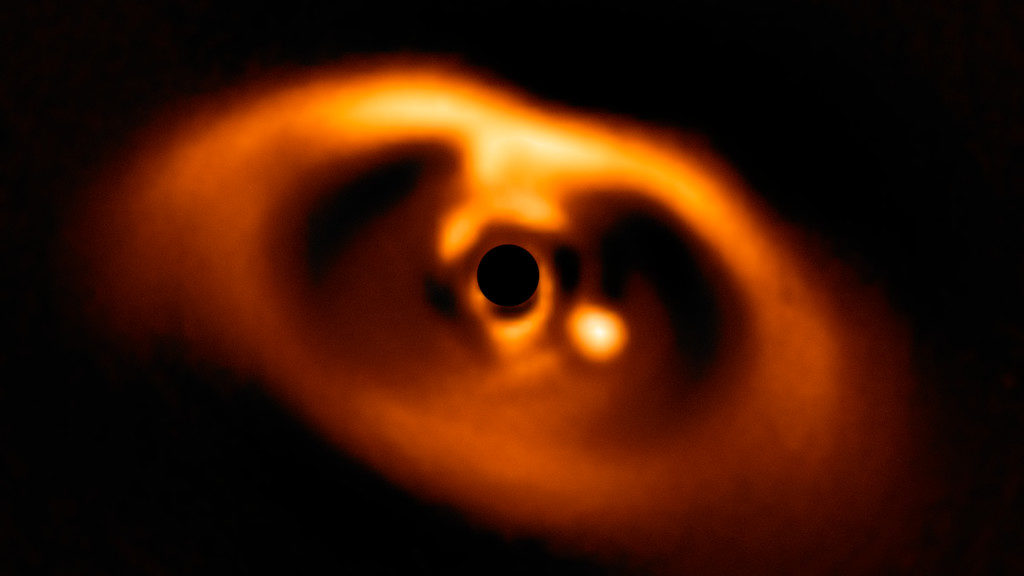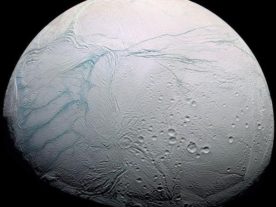An international group of astronomers has captured what is being called the first confirmed image of a planet forming near a young dwarf star.
The group, led by scientists at the Max Planck Institute for Astronomy in Heidelberg, Germany, found the newborn planet making its way through a protoplanetary disk of dust and gas that surrounds a low mass variable star called PDS 70.

The SPHERE instrument is shown shortly after it was installed on ESO’s VLT Unit 2 Telescope. The instrument itself is the black box, located on the platform to one side of the telescope. (ESO/J. Girard via Wikimedia Commons)
The young star is located in the Centaurus constellation and is about 370 light years from Earth.
Observational data suggests the still-forming planet called PDS 70b has a cloudy atmosphere and is about three billion kilometers from its host star, which is approximately the distance between our Sun and Uranus.
The data analysis of PDS 70b also indicates that the baby planet has a surface temperature of around 1,000° Celsius, is a gas giant planet that has a mass several times greater than our solar system’s most massive gas giant, Jupiter.
The discovery of the planet and its images were made with the Spectro-Polarimetric High-contrast Exoplanet REsearch or SPHERE instrument on the European Southern Observatory’s Very Large Telescope, in Chile.
The astronomer’s findings will be detailed in two studies that will be published in the journal Astronomy and Astrophysics.























Comments are closed.